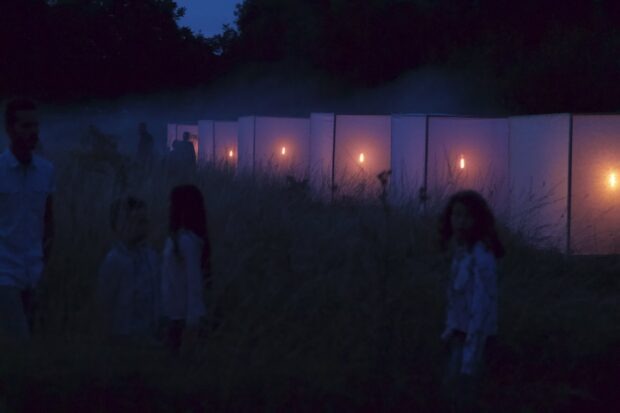Nestled in the hollow of a valley, on a terrace, on a hillside, or at the foot of a forgotten abbey, delightful gardens live in the shade of the great historical parks of the Loire Valley. Ecological, theatrical, feminine, nurturing… these settings with an undeniable cachet are often little known to the general public. Wrong!
On the occasion of the 3rd edition of New Renaissance(s), dare to lose yourself in their romantic and bucolic charm, another discreet facet of the “Garden of France”. (First part)
Decorative and scenic in Beauce
About ten kilometers from Pithiviers (Loiret), in the heart of the town of La Neuville-sur-Essonne, The Midnight Theater set the scene. Atypical decor. “A garden specially designed to host shows and exhibitions, an evocation of the process of artistic creation with its successes, its failures, what the creator wanted, the time required for this creation and its share of chance”, describes Arnaud Parent, designer of this Grand Jardin. Planted in 2013 on one hectare, this scenic garden allows you to stroll through a rose garden designed by André Ève where “all the varieties he has created with the mother roses used for his hybridizations. » But also through a large central meadow suitable for outdoor shows; hanging orchards where brambles and botanical fruit trees offer fruit to be picked directly; a hazel grove, ideal scenography for exhibitions; or even a “forbidden” forest designed to accommodate wild and re-wild nature: “a space of trees with remarkable bark voluntarily abandoned to let nature take back its rights, along a sunken path. It is a landscape, ecological, artistic and very poetic project”. Open all year round for spontaneous visits, this garden of the Théâtre des Minuits will present in 2023 a new show adapted from a work by Anton Chekhov, Le Sauvage. “A little-known text from the end of the 19th century which depicts a character obsessed with buying back forests to avoid their destruction. He claims that the forest is good for the climate but also for people. » Well…
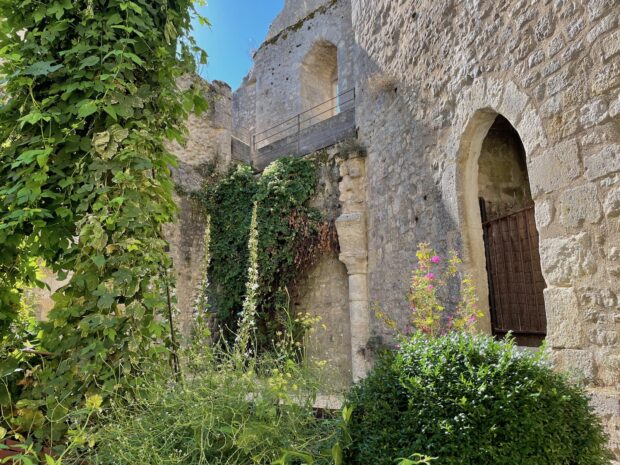
Six kilometers further south, Yevre-le-Chatel , is the pearl of the Pithiverais. At the crossroads of Beauce and Gâtinais, the small village of 231 souls takes shape with charm and coquetry around an exhibition of contemporary works of art. The only village in the Loiret classified among the “most beautiful villages in France”, it has been recognized as a “village-garden” by theAPJRC (Association of parks and gardens of the Centre-Val de Loire region), hoping for an official village label “Remarkable Garden” which would make it the second of its kind in the region with Chédigny in Touraine. “4000 linear meters of vegetated frontage feet and 500 rosebushes maintained by the association of the Compagnons de la Châtellenie and volunteers thanks to the products of the entrances to the fortress”explains Alain di Stefano, deputy mayor of Yèvre-le-Châtel and president of the association Les Compagnons de la Châtellenie. “A carpeting revegetation that must appear spontaneous and unprepared”, which dresses alleys and alleys, transforming old walls, stairs and low stone walls into a setting right up to the foot of the fortress. There, closed walls from the 10th century shelter botanical squares in the shade of the upper courtyard: 150 dyeing, aromatic, medicinal, wall plants, and even vines bloom in colors and perfumes. Going down towards the unfinished church of Saint-Lubin, the new rose garden of Yèvre is part of the Route de la Rose. Dedicated to Marcel Robichon, it preserves about forty roses created by the rose grower at the foot of two pretty sculptures by Dimas and Mercier. A flowery garland of old varieties that punctuate the ground, like a chronological frieze, its various creations. “The goal is to bring together all of Marcel Robichon’s productions, which are more numerous than André Ève. »
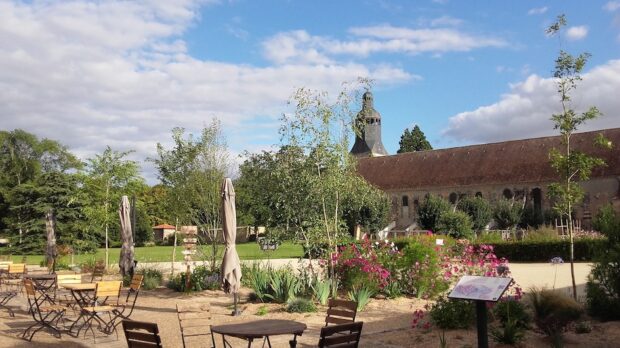
A jewel in the heart of Perche
In Eure-et-Loir, you have to join the Perche PNR to unearth an unsuspected abbey garden. Near Nogent-le-Rotrou, the domain of Thiron-Gardais shelters in the hollow of its gardens one of the high places of medieval spirituality. Along the 64 meters of the Romanesque nave (the second longest after Chartres Cathedral) of an abbey founded in 1114, stretches a set of thematic gardens over 4 ha, with a unique atmosphere. Here, at the foot of a 15th century tithe barn, a medieval-inspired interpretive garden runs through squares of herbs, herbs, tinctorial plants, fruit shrubs, and a vegetable garden with late varieties sold during the autumn festival (3rd weekend of October). There, rhododendrons, hydrangeas and hydrangeas are organized in a heather garden. Here again, a fruit terrace with trellised apple trees, a rose garden, colorful gardens, and a fishpond, the setting for La Pêche aux eels in Renart’s novel. But the star of the place remains the venerable lime tree known as the Revolution. Labeled “remarkable tree”, this two-trunked lime tree dates back almost 250 years. Attached to the estate, the Royal and Military College and its historic garden, owned by Stéphane Bern, are the subject of another discovery.
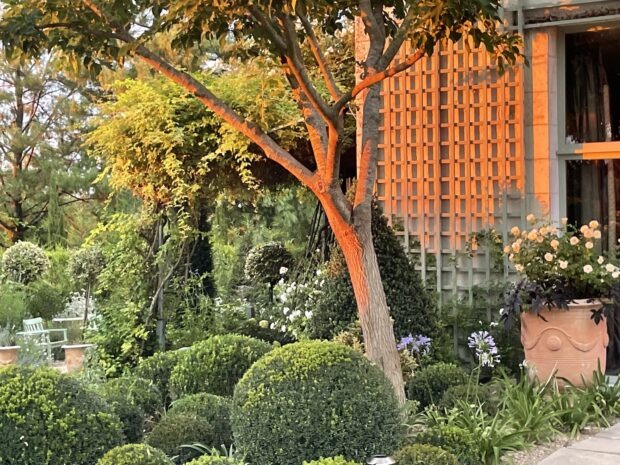
Ecological nuggets in the Garden of France
You thought you had toured the parks and gardens in Touraine? Here are two nuggets still confidential but whose visit is essential. In Huisms, The Garden of Sewing is the work of Coral Miles. Originally from England and South Africa, this botanical enthusiast has plants in her blood. Coming from a line of gardeners and botanists Coral returned to France 15 years ago to create an organic garden “by showing that it is possible to associate aestheticism, classic and modern with ecology. » Thus, around an old 19th century manor house left abandoned, she recreated a little paradise with her mother. For this, Coral used the existing mineral structure and deconstructed what remained of the French garden by laying out 5000 m2 of open terraced gardens with strong species that hardly need water: charming hedges, paths boxwood with English-style beds of Mediterranean plants, rose garden, topiary yews, Italian cypresses, alleys of apple trees… A haven of peace for biodiversity: “We have tripled the bird population, attracted many pollinating insects and transformed poor, dry land soaked in weed killer into an abundance of bee-producing and medicinal plants. My goal is to become a remarkable garden, through its design and its ecological and educational missions. »
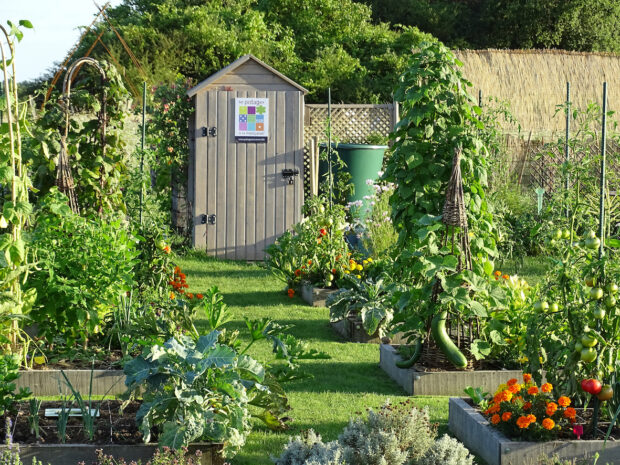
Photo The Vegetable Garden in Squares.
In Chinon, Anne-Marie Nageleisen has also signed up for a new garden adventure. This craftsman, restorer of gilding specializes in organic vegetable gardens in French-style squares ( “A method that I invented when I was wondering 25 years ago how to organize my very small garden, and which allows me to live independently with vegetables for two people with 12 m2 of cultivated area. » A success so great that she decided to share her method. In addition to her vegetable gardens open to visitors, Anne-Marie offers courses and thematic courses according to your desires: vegetable garden in squares but also learning to make cheese or sourdough bread. “It’s about planning and organizing crops. This method is based on respect for soil life and biodiversity. » Thus, visitors discover the amount of harvest possible all year round with a winter garden in December. ” we are in a sharing of truth. We take out postcard images of the gardens. »
To follow Part II of the unknown Gardens in the Loire Valley Center Region.
Photo by A credit Le Jardin de la Couture
[PUBLI] Centre-Val de Loire: these little-known gardens that are off the beaten track (1)

